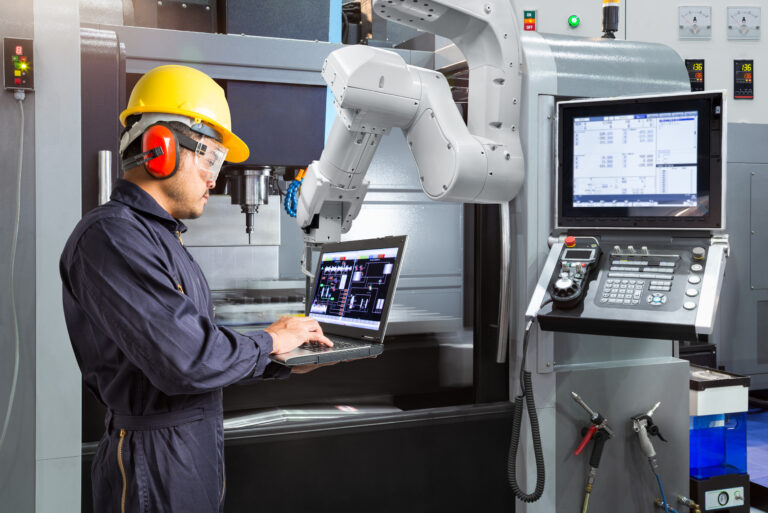Not too many years ago, the manufacturing industry relied on manual operations for most end-of-line packaging. However, robotics has transformed the entire process by significantly enhancing efficiencies, increasing safety, and reducing costs.
Robotic end-of-line packaging (EOLP) represents a leap in technology that employs robots instead of humans to package various items into boxes, cartons, and cases. As consumers demand shorter delivery times, companies are focusing on the need for faster production. And in most cases, deploying more robotic tools to automate end-of-line tasks is the answer.
Benefits of Robotic End-of-Line Packaging
Manufacturers see a high return on investment (ROI) for end-of-line robotic automation. Some of the benefits include:
- Increased productivity: EOLP production is higher and more efficient compared to manual packaging. With the demand for food predicted to grow 60 percent to 98 percent by 2050, advanced food production processes like EOLP will help meet the increased demand.
- Increased quality control and product safety: With automated inspection, robots can reliably minimize the likelihood of product damage and handling errors. Automated end-of-line solutions can also improve food safety through the use of robots. Less human involvement in the production process reduces the risk of errors and increases safety.
- Improved utilization of skilled labor: Skilled labor is in short supply. With the help of automation, companies can free up workers for high-value, non-automated production processes.
- Increased worker safety: Industrial robots eliminate the need for workers to lift heavy packages, resulting in fewer work-related injuries and ergonomic issues.
- Quicker product changeovers: Because of automatic tool changers, robots can minimize the process of configuring equipment settings each time there is a change from one product to another.
- Smaller footprint: Robotic automation requires about 15 percent less factory footprint compared to traditional packaging systems.
Which Industries use Robotic End-of-Line Packaging?

Robots now contribute to the packaging of products in numerous industries, including:
- Food and beverage
- Technology
- Pharmaceuticals
- Healthcare and medical
- Consumer goods
Since there will probably be specific product types for nearly every kind of customer, manufacturers will face more packaging variations. End-of-line automation ensures a production process that can quickly and efficiently respond to smaller quantities and various types of packaging.
Are End-of-Line Packaging Automation Services Right for You?
If you’re looking to increase your production efficiency, reduce costs, and increase ROI for your end-of-line packaging operations, robotic automation might be the solution you are looking for. At Force Design, we’re the experts in automated processes. Visit our guide to robotics and automation for end-of-line packaging if you’d like to learn more, or get in touch with us! We’d love to hear about your next project.



